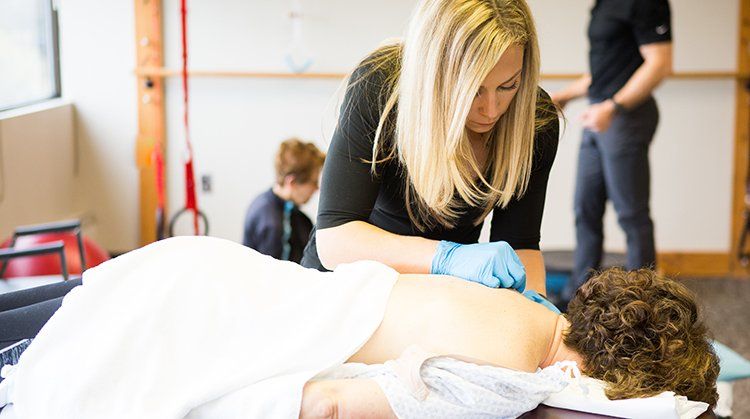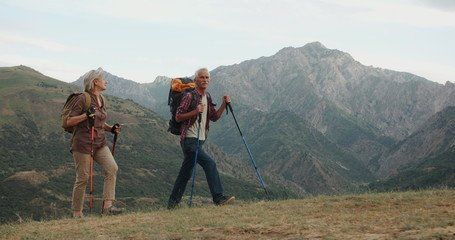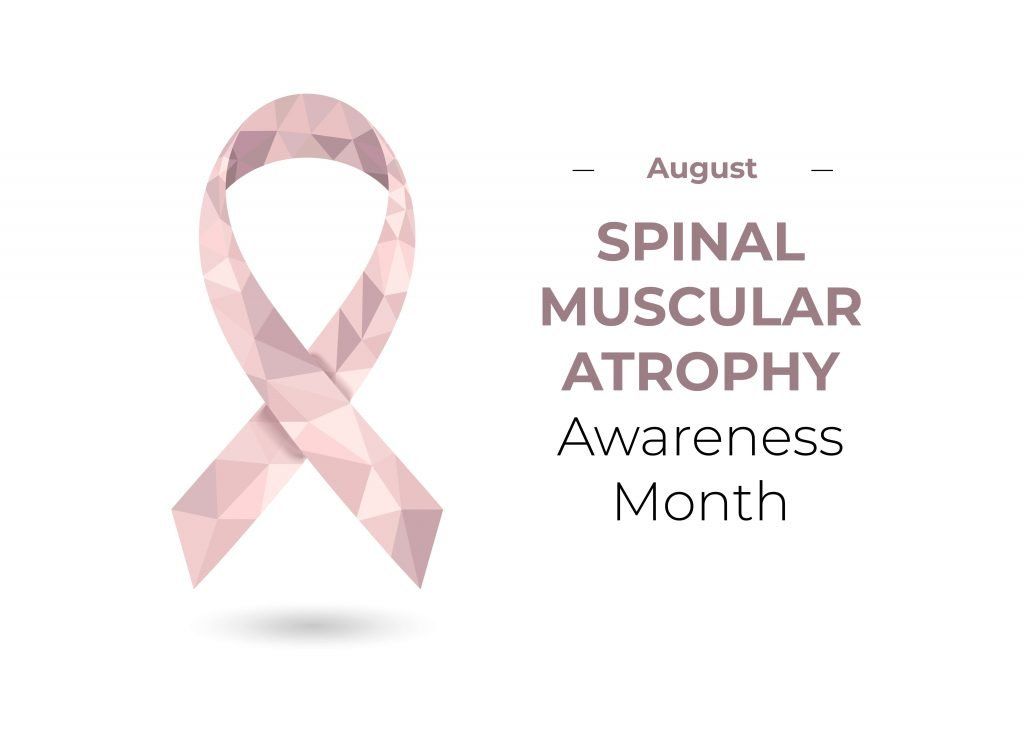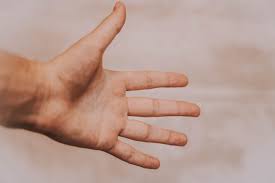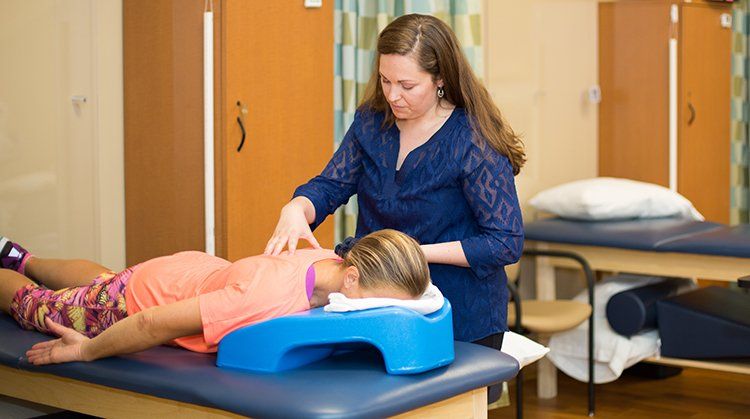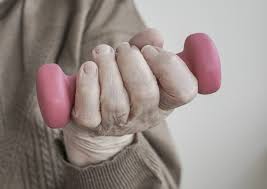Physical Therapist's Guide to Spinal Stenosis
It is estimated that as many as 80% of us will experience some form of back or neck pain at some point in our lifetimes. Spinal stenosis can be one cause of back and neck pain. It affects your vertebrae (the bones of your back), narrowing the openings within those bones where the spinal cord and nerves pass through.
What Is Spinal Stenosis?
Spinal stenosis is a narrowing within the vertebrae of the spinal column that results in too much pressure on the spinal cord (central stenosis) or nerves (lateral stenosis). Spinal stenosis may occur in the neck or in the low back.
The most common causes of spinal stenosis are related to the aging process in the spine:
- Osteoarthritis is a deterioration of the cartilage between joints. In response to this damage, the body often forms additional bone (called "bone spurs") to try to support the area. These bone spurs might cause pressure on the nerves at the point where the nerves exit the spinal canal.
- Normal aging can result in a flattening of the disks that provide space between each set of vertebrae. This narrowed space allows less room for the nerve to exit from the spinal cord.
- Spinal injuries, diseases of the bone (such as Paget disease), spinal tumors, and thickening of certain spinal ligaments also may lead to spinal stenosis.
In most cases, symptoms of spinal stenosis can be effectively managed with physical therapy and other conservative treatments. Only the most severe cases of spinal stenosis need surgery or spinal injections.
| Spinal Stenosis |
Signs and Symptoms
Spinal stenosis may cause symptoms such as:
- Pain, numbness, tingling, or weakness in your arms and shoulders, legs, or trunk
- Occasional problems with bowel or bladder function
If you have spinal stenosis in the neck (cervical spinal stenosis), you may have weakness, numbness, and pain in one or both arms and often in the legs, depending on which nerves are affected. You may or may not have pain in the neck itself.
If you have spinal stenosis in the low back (lumbar spinal stenosis), you may have pain, numbness, and weakness in the low back and one or both legs, but not in the arms. Your symptoms may get worse with walking and improve with sitting.
How Is It Diagnosed?
Because the symptoms of spinal stenosis are often similar to those of other age-related conditions, a careful diagnosis is important. Your physical therapist will conduct a thorough evaluation, including a review of your medical history, and will use screening tools to determine the likelihood of spinal stenosis. Your physical therapist may:
- Ask you very specific questions about the location and nature of your pain, weakness, and other symptoms
- Ask you to fill out a body diagram to indicate specific areas of pain, numbness, and tingling
- Perform tests of muscle strength and sensation to determine the severity of the pressure on the nerve root
- Examine your posture and observe how you walk and perform other activities
- Measure the range of motion of your spine and your arms and legs
- Use manual therapy to evaluate the mobility of the joints and muscles in your spine
- Test the strength of important muscle groups
If you have muscle weakness, loss of sensation, or severe pain, diagnostic tests such as an X-ray or MRI may be needed. Physical therapists work closely with physicians and other healthcare providers to ensure that an accurate diagnosis is made and the appropriate treatment is provided.
Research shows that in all but the most extreme cases of spinal stenosis (usually involving muscle weakness or high levels of pain), conservative care, such as physical therapy, achieves better results than surgery.
How Can a Physical Therapist Help?
Your physical therapist's overall purpose is to help you continue to participate in your daily activities and life roles. He or she will design a treatment program based on both the findings of the evaluation and your personal goals. The treatment program likely will be a combination of exercises.
Your physical therapist will design a specialized treatment program to meet your unique needs and goals. Your program may include:
Gentle Movement. Your physical therapist may teach you specific movements to help take pressure off the nerve root, which can help alleviate pain.
Stretching and Range-of-Motion Exercises. You may learn specific exercises to improve mobility in the joints and muscles of your spine and your extremities. Improving motion in a joint is often the key to pain relief.
Strengthening Exercises. Strong trunk (abdomen and back) muscles provide support for your spinal joints, and strong arm and leg muscles help take some of the workload off your spinal joints.
Aerobic Exercise. You may learn aerobic exercise movements to increase your tolerance for activities that might have been affected by the spinal stenosis, such as walking.
This might sound like a lot of exercise, but don't worry: research shows that the more exercise you can handle, the quicker you'll get rid of your pain and other symptoms!
Your physical therapist may decide to use a combination of other treatments as well, including:
Manual Therapy. Your physical therapist may conduct manual (hands-on) therapy such as massage to improve the mobility of stiff joints that may be contributing to your symptoms.
Use of Equipment. Your physical therapist may prescribe the use of rehabilitation equipment—such as a special harness device that attaches to a treadmill to help reduce pressure on the spinal nerves during walking.
Postural Education. You may learn to relieve pressure on the nerves by making simple changes in how you stand, walk, and sit.
Can this Injury or Condition be Prevented?
Spinal stenosis usually is a natural result of aging. Research has not yet shown us a way to prevent it. However, we do know that you can make choices that lessen the impact of spinal stenosis on your life and even slow its progression.
- Regular exercise strengthens the muscles that support your back, keeps the spinal joints flexible, and helps you maintain a healthy body weight.
- Using supportive chairs and mattresses and avoiding activities that can lead to injury—such as heavy, awkward, or repetitive lifting—can help protect your back.
Your physical therapist can help you develop a fitness program that takes into account your spinal stenosis. There are some exercises that are better than others for people with spinal stenosis, and your physical therapist can educate you about what exercises and activities you should avoid. For instance, because walking is usually more painful than sitting, bicycling may be a better way for you to get regular physical activity. All low back pain is different and unique to each individual. Your physical therapist will design a specialized exercise program for you based on your movement exam, your health profile, and your goals.
What Kind of Physical Therapist Do I Need?
All physical therapists are prepared through education and experience to treat people who have spinal stenosis. You may want to consider:
- A physical therapist who is experienced in treating people with pain, orthopedic, or musculoskeletal diagnoses.
- A physical therapist who is a board-certified clinical specialist or who completed a residency or fellowship in orthopedic physical therapy. This physical therapist has advanced knowledge, experience, and skills that may apply to your condition.
You can find physical therapists who have these and other credentials by using Find a PT, the online tool built by the American Physical Therapy Association to help you search for physical therapists with specific clinical expertise in your geographic area.
General tips when you're looking for a physical therapist:
- Get recommendations from family and friends or from other health care providers.
- When you contact a physical therapy clinic for an appointment, ask about the physical therapist's experience in helping people with spinal stenosis.
- During your first visit with the physical therapist, be prepared to describe your symptoms in as much detail as possible, and say what makes your symptoms worse.
MoveForwardPT.com, the official consumer Website of the American Physical Therapy Association,© 2017
